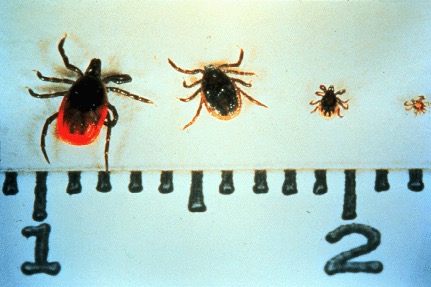Bacteria may be considerably less complex than the hosts they colonize, but they may be the ones in charge. New research finds that tick-invading bacteria can manipulate the tick microbiome and create a more favorable environment for colonization.
A team of Yale researchers, Dr. Lei Liu and Dr. Erol Fikrig, tested the mechanism through which a tick borne-pathogen, Anaplasma phagocytophilium, invades ticks. These ticks can then go on to invade humans. The team compared ticks that fed on infected mice and ticks that fed on infection-free mice.
When the pathogen enters a tick, it induces expression of a protein that degrades biofilm, degrading the tick’s membranous gut barrier. By eliminating the tick’s primary defense against invasion and altering the local environment, the pathogen exposes the gut to infection and makes it hospitable to colonization. Once it has weakened the gut barrier, the pathogen can more easily invade the gut and pass to the salivary gland, from where it can be passed on to the tick’s own vectors, including mice and humans.
In addition to altering the gut microbiome, the pathogen also increases chances of pathogen invasion by protecting ticks from cold temperatures and extending lifetimes into winter. A longer lifespan results in an increased probability of spreading the pathogen. This alteration, previously studied by the research team, serves as a secondary mechanism through which the pathogen indirectly alters the environment of the host to make it more susceptible to colonization.
The pathogen observed is a vector of human granulocytic anaplasmosis, a common disease associated with headaches, fever, chills, and muscle pain and inflammation within two weeks of a tick bite. The black-legged ticks and western black-legged ticks that carry the pathogen are mainly found in Northern Central America, North California, and New England and peak during the summer tick season.
The paradigm of the pathogen infection as a passive process has shifted to an active process that can affect gene expression and microbiota upon entering a host. Dr. Liu and Dr. Fikrig hope that increased understanding of tick-pathogen interaction can lead to improved prevention and control strategies for associated tick-borne diseases. The mechanisms through which pathogens modify their vectors are relevant to diseases ranging from malaria to Zika. This research can be vital to shifting the model of disease prevention.

